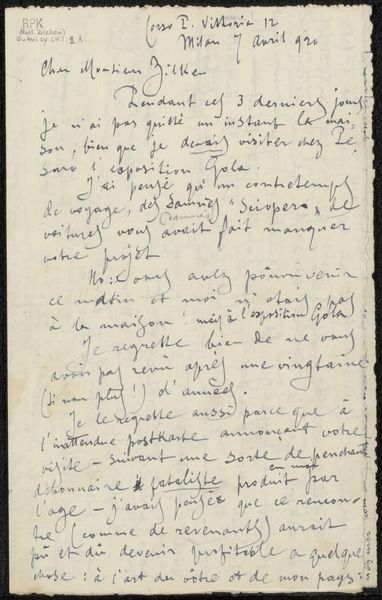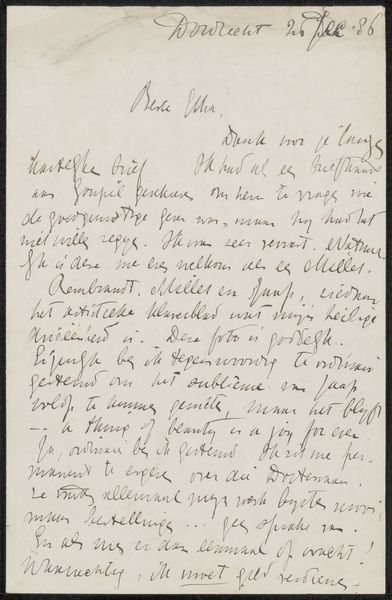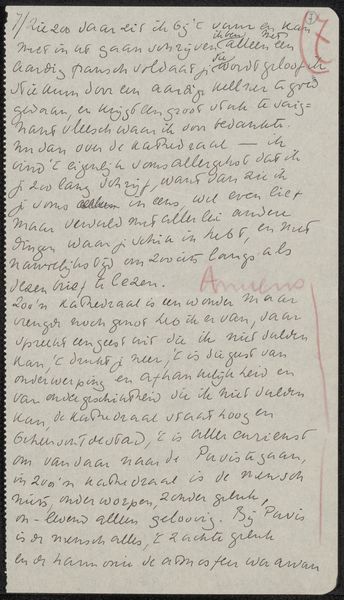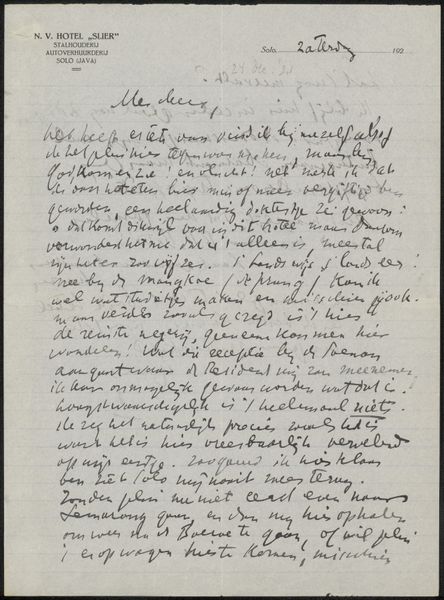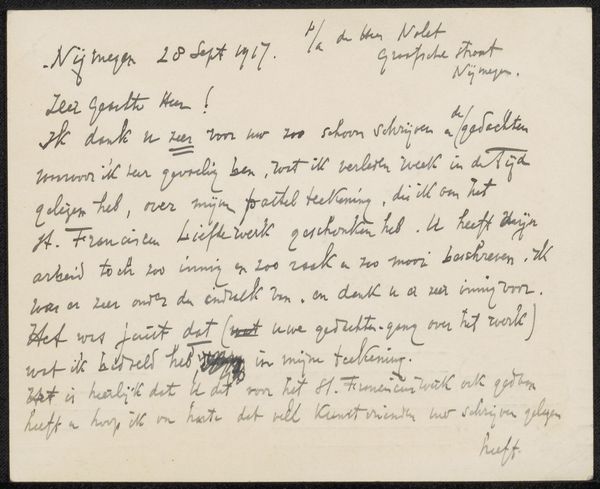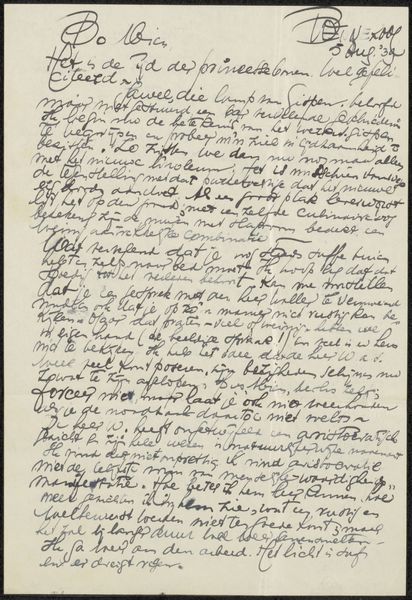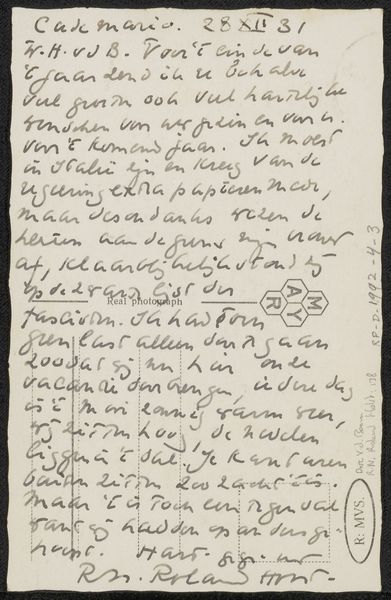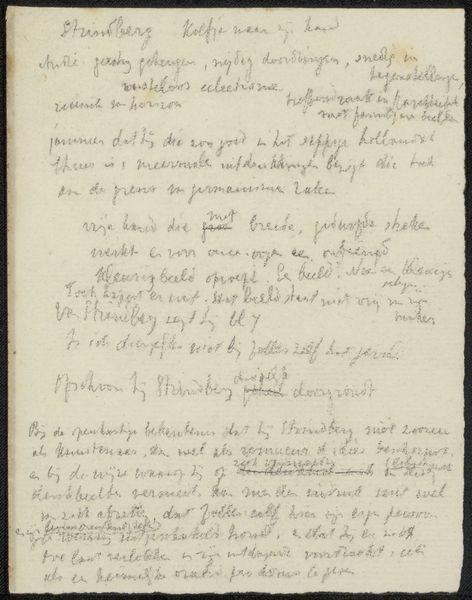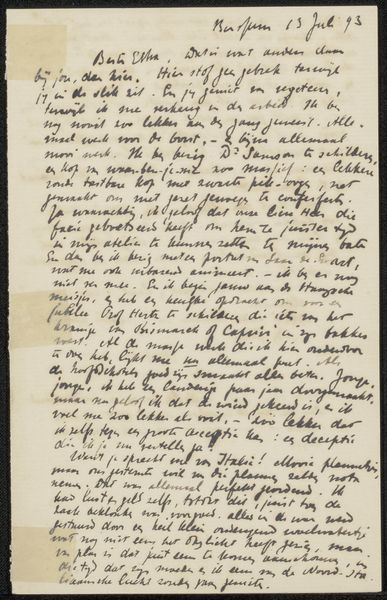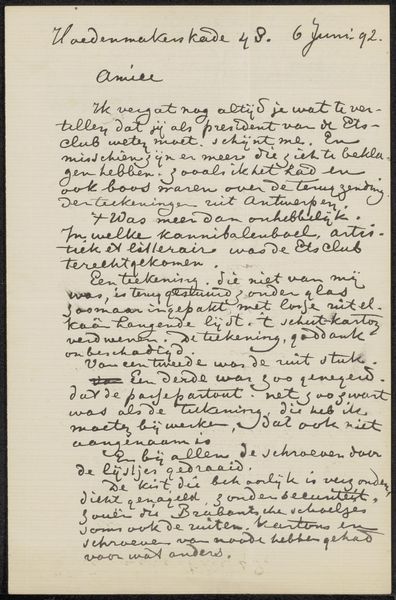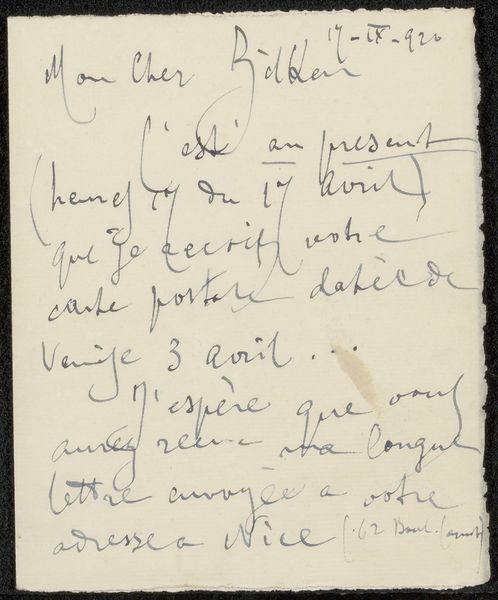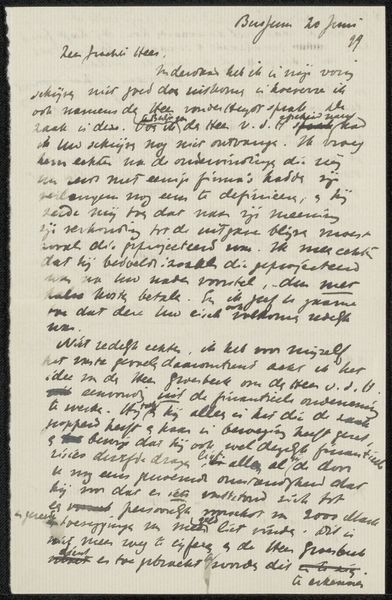
drawing, paper, ink, pen
#
drawing
#
hand-lettering
#
hand drawn type
#
hand lettering
#
paper
#
personal sketchbook
#
ink
#
hand-drawn typeface
#
hand drawn
#
pen-ink sketch
#
pen work
#
sketchbook drawing
#
pen
#
sketchbook art
#
monochrome
Copyright: Rijks Museum: Open Domain
Curator: This drawing, "Brief aan Philip Zilcken" by Vittore Grubicy, likely created sometime between 1920 and 1929, intrigues me because it is a private communication. It is executed with pen and ink on paper, elements one might find in personal sketchbooks. What strikes you initially? Editor: It’s just text, almost like a page torn from a diary. I find it fascinating that something so seemingly personal is now in a museum. I wonder about its context; it almost feels like a secret we are now privy to. What can you tell me about this piece? Curator: As an historian, I am drawn to the cultural context that made this intimate glimpse possible. Who was Philip Zilcken, and what role did he play in Grubicy's world? Consider the early 20th century, a time of burgeoning artistic movements but also private salons and artistic circles where such correspondence held sway. This letter offers an interesting window into these intimate networks and the dynamics of artistic recognition and influence. What impact might this reveal about the artist's perspective, motivations, or strategies at that time? Editor: That's interesting. So, by studying Zilcken and Grubicy's relationship, we can learn something about the artistic scene they were both involved in. Did artists at the time frequently use letters to discuss art and ideas? Curator: Absolutely. Correspondence like this was a key mode of discourse and networking, shaping the artistic landscape. Analyzing the language, the tone, and even the paper itself gives insights that formal artworks often obscure. Editor: I see. So, it is almost like peeking behind the curtain and observing what shaped artistic creation during that time. I never considered how much letters could reveal about a specific era and its social dynamics. Curator: Exactly! And remember, art doesn’t exist in a vacuum; museums often shape the public perception and historical understanding of pieces like this drawing. This further informs a curator's decision on what aspects of the image to accentuate within a gallery space. Editor: This gives me a fresh outlook on how social structures shape an artwork and the way we consume it.
Comments
No comments
Be the first to comment and join the conversation on the ultimate creative platform.
